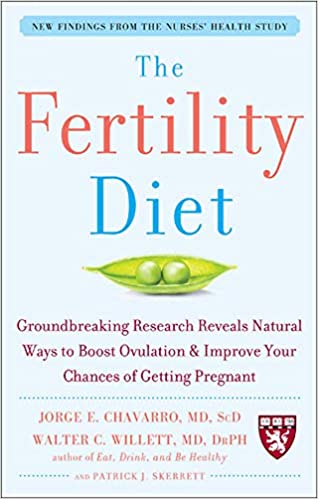Lots of women who sign up for free consultations with us have either been diagnosed with PCOS or suspect they may have PCOS. They want to know what this means for them and their ability to track their cycles effectively using natural family planning.
If you’re in this position, we created this guide for you! It’s a science-backed guide to PCOS for women considering using natural family planning (NFP). We teach the Marquette Method, but we’ve written this guide in such a way that it’s appropriate for women considering any method of NFP.
Can women with PCOS use NFP?
The short answer is yes, it is possible to use NFP effectively, even if you have PCOS.
And if you want the long answer, then keep reading, friends…
What is PCOS?
If you have or suspect you have Polycystic Ovarian Syndrome (PCOS), then Jorge Chavarro’s characterization of it as a “hormonal hurricane” likely resonates with you (2008).
The syndrome, first called Stein-Leventhal syndrome, was identified in the 1930s by two Chicago gynecologists (Stein and Leventhal) who noticed the cluster of symptoms characteristic of PCOS in a group of their patients.
PCOS is a hormonal imbalance disorder that impacts a woman’s ovaries and interferes with menstrual cycles (Chavarro et al., 2008). PCOS is not a disease—it’s a collection of signs and symptoms arising from underlying complications. The World Health Organization (WHO) estimates that 8–13% of reproductive-aged women worldwide are affected by PCOS, but up to 70% of them have never been diagnosed (WHO, 2024).
The first formal attempt at codifying PCOS took place in 2003, as two medical societies met in Rotterdam for a workshop, where they collectively agreed on diagnostic criteria for PCOS.
According to the Rotterdam criteria, PCOS is diagnosed when 2 out of the following 3 symptoms are met:
- oligo-anovulation (infrequent or absent menstrual periods)
- hyperandrogenism (high levels of male sex hormones)
- polycystic ovarian morphology (enlarged ovaries with many small cysts, as seen in a transvaginal ultrasound) (Christ and Cedars, 2023).
Of note—and despite the name—1/3 of PCOS cases involve the first 2 symptoms but do not involve polycystic ovaries (Herrett, 2022).
In 2006, the Androgen Excess & PCOS Society built on the Rotterdam criteria by adding a new component, that other related disorders with overlapping symptoms have been ruled out, including:
- hyperprolactinemia
- hypothalamic amenorrhea
- congenital adrenal hyperplasia
- Cushing’s syndrome
- Grave’s disease or other thyroid complications.
For someone pursuing a PCOS diagnosis and clarity into their cycles and symptoms, the process for getting an accurate, firm diagnosis usually involves more than one doctor visit and more than one test.
Diagnosing PCOS is not a straightforward process, which is likely why 70% of women remain undiagnosed. The diagnostic process usually includes a clinical history, a physical exam, ultrasound imaging, and lab work. Labs may include testing levels of the thyroid stimulating hormone (TSH), prolactin, 17 hydroxyprogesterone, total and free testosterone, the luteinizing hormone (LH), insulin, c-reactive protein, DHEA-S, cortisol, anti-müllerian hormone, an oral glucose tolerance test, a fasting lipid profile, comprehensive metabolic sampling, and/or endometrial sampling (Taylor et al., 2019; WHO, 2024).
The cause of PCOS is unknown, though heredity can be a factor if you have a close blood relative with PCOS, such as your mom or your sister (MFMER, 2022).
From research, we know that PCOS impacts more than just fertility. Complications can include nonalcoholic fatty liver disease (where fat builds up in the liver); dislipidemia (fat in the blood); metabolic syndrome (a cluster of obesity, high blood pressure, elevated blood sugar, irregular cholesterol levels that all increase the risk of heart disease, stroke, and diabetes); type 2 or prediabetes; sleep apnea; anxiety; depression; eating disorders; and endometrial cancer (Pfieffer, 2019).
Types of PCOS
Just as not all women diagnosed with PCOS have the same set of symptoms, not all kinds of PCOS are the same.
According to Briden (2022) PCOS can be separated out into 4 sub-types:
- Insulin-Resistant PCOS
- Post-Pill-Induced PCOS
- Inflammatory PCOS
- Adrenal PCOS
Insulin-Resistant PCOS
Insulin-resistant PCOS accounts for approximately 70% of PCOS cases (Briden, 2022; Ostrzenski, 2002). Insulin, produced by the pancreas, is a chemical messenger in the body. Insulin allows cells to use sugar as the body’s main energy supply. When cells become resistant to insulin, blood sugar levels increase. In response, the pancreas tries to make more insulin to lower the blood sugar level.
When the pancreas makes too much insulin, the body can make an excess of androgen, which is a male sex hormone. High androgen levels in women can lead to classic PCOS symptoms such as acne, thinning hair or baldness, and hirsutism (male-patterned hair growth on the face, chest, stomach, or back) (Heffner, 2001).
Women with insulin-resistant PCOS may struggle with excess weight around the stomach, fatigue, and darkened areas of skin around the neck and armpits (MFMER, 2022).
Post-Pill Induced PCOS
Post-pill-induced PCOS is a temporary form of PCOS which can occur when women stop taking oral contraceptives. An important characteristic of this this type of PCOS is that women experience regular cycles prior to taking oral contraceptives but experience PCOS symptoms after discontinuing their use (Briden, 2022).
The pill works by suppressing ovulation. There can be a lingering effect of cycles without ovulation following the transition from contraception to natural cycles. The process of a woman’s hormones getting back to normal varies depending on the type of contraceptive used, the woman’s health history, age, weight, and smoking status (Gayatri et al., 2022).
Inflammatory PCOS
Inflammatory PCOS can be caused by any of the many ways that the body produces an inflammatory response, including toxins in the environment, inflammatory foods, infection, injury, or a histamine intolerance (Briden, 2022). Chronic inflammation leads to the ovaries making too much testosterone.
With this type of PCOS, a woman may experience headaches, joint pain, skin issues, and digestive problems (MFMER, 2022).
Adrenal PCOS
Adrenal PCOS accounts for roughly 10% of PCOS cases (Briden, 2022). As part of a response to stress, the adrenal glands on top of the kidneys produce two hormones called dehydroepiandrosterone sulfate (DHEA-S) and cortisol. When these hormones are elevated, the ovarian, endocrine, and metabolic processes can be impacted. As with insulin-resistant PCOS, a woman may also experience acne and hirsutism with adrenal PCOS (MFMER, 2022)
NFP with PCOS: Fertility Tracking and Fertile Sign Variability
One of the Marquette Method instructors, Jennifer Sikes, has PCOS. She’ll be the first to tell you that having unmanaged PCOS can make fertility tracking frustrating. The good news, however, is that once your PCOS is well managed, the charts of a woman with PCOS can be indiscernible from the charts of women without PCOS. Yes, women with PCOS can use NFP effectively.
That said, fertility tracking and NFP can be difficult for women with PCOS. This is because the female menstrual cycle is controlled by a complex interplay of four main hormones that communicate back and forth between the brain and the ovaries. The key hormones involved in a healthy cycle include the follicle-stimulating hormone (FSH), estrogen, LH, and progesterone. Put most simply, with PCOS, there is essentially too much estrogen and not enough progesterone. This disrupts the hypothalamus-pituitary-ovarian axis communication and can lead to fertile signs which are difficult to interpret.
The main event in the menstrual cycle is ovulation. During ovulation, an egg is released from an ovary. PCOS can complicate ovulation, causing maturing follicles to stay in the ovary instead of being released, potentially creating cysts (Chavarro et al., 2008). Infertility or difficulty getting pregnant arise when ovulation does not occur (MFMER, 2022). Even when a woman can achieve pregnancy, unmanaged PCOS can still lead to complications such as pre-eclampsia, gestational diabetes, premature birth, c-section, and miscarriage (Husby et al, 2024; Kamalanathan et al, 2013). Unmanaged PCOS can look unpredictable. Approximately 85% of women with PCOS experience menstrual dysfunction. Women may have very infrequent cycles or long irregular cycles (MFMER, 2022).
For women with unmanaged PCOS who track their fertility with a mucus-based method of NFP (such as the Creighton Model and the Billings Method) the presence of persistent, unopposed estrogen can lead to an abundance of peak-type cervical mucus. This can make it difficult to differentiate between fertile and infertile days or identify the fertile window.
Likewise, women following the Marquette Method of Natural Family Planning may experience long periods of “highs” on the Clearblue Monitor, because “high” days on the monitor correspond to days the monitor detects elevated estrogen levels. An increase in circulating LH can lead to lots of close peaks and a higher LH threshold (Heffner, 2001).
Of the two options, using a fertility monitor to track hormone levels directly is preferred versus relying on mucus observations, which is tracking the body’s response to (symptoms of) hormonal shifts. In some cases, your NFP instructor might recommend following the provisional Marquette Method Mira Monitor Protocols because the Mira Monitor can detect non-ovulatory LH surges and/or confirm ovulation by measuring elevated progesterone levels in the luteal phase (Fehring et al., 2023). Of course, if PCOS is well managed and the woman is in regular ovulatory cycles, then the Clearblue Fertility monitor can be used (Fehring et al., 2023).
Yes, you can use NFP if you have PCOS. But don’t do it alone!
Anyone considering using NFP with symptoms of PCOS should begin by working with an NFP instructor experienced in helping women with PCOS interpret their cycles. PCOS is a multifaceted disorder, so it’s likely that a credentialed interprofessional healthcare team may be essential to successful management. In addition to your NFP instructor, your team will likely also include a NaPro or NFP-aware provider, a registered dietitian, and/or an endocrinologist. Finding a PCOS support group can also be helpful.
PCOS is a chronic condition—you’ll never be entirely cured from it. That said, symptom improvement is possible and can often be achieved through supplementation and lifestyle modifications such as weight loss, regular exercise, reducing stress, getting adequate sleep, practicing self-care, and avoiding smoking (Pfieffer, 2019).
Dietary modifications which can help alleviate PCOS symptoms include limiting processed foods and refined carbs which cause blood sugar levels to raise quickly (e.g. sugar, white rice, white flour, potatoes, etc); eating a well-balanced diet with complex carbs from high-fiber fruits and vegetables, lean meats, fish, whole grains; and moderating alcohol and caffeine consumption (Chavarro et al., 2008). Regular meals and sticking to an eating schedule can also help maintain blood sugar levels instead of riding the glucose roller coaster.
There are various supplements which can help with PCOS. Myoinositol can increase insulin sensitivity (Oliva et al., 2018). The form, quantity, ratio, and time of day taken are all important factors to consider. Omega 3 fish oil supplementation can help reduce inflammation and support heart health. Magnesium supplementation can help decrease inflammation, improve insulin resistance, reduce stress, and improve sleep. Other recommended supplements for PCOS include vitamin A, B group vitamins, vitamin D, vitamin E, calcium, chromium, zinc, melatonin, and probiotics (Günalan et al., 2018).
PCOS treatment focuses on managing the symptoms which are concerning to you. Metformin is a common medication that is prescribed for the insulin-resistant component of PCOS to help lower blood sugar levels and restore ovarian function (Pfieffer, 2019). Clomiphene is an estrogen modulator that helps stimulate ovulation. Acne treatments involve various pills, topical creams, and gels. Electrolysis and laser hair removal are options to help with hirsutism.
And if you need more help—
At Vitae Fertility, we’ve collectively taught 6000 women how to interpret their cycles using the Marquette Method of NFP, including many with PCOS.
Every woman’s PCOS presentation is different, so getting personalized advice is essential. We offer free consultations and would be glad to speak with you about your PCOS symptoms and help you make a decision about if natural family planning is a good choice for you and your family.
Recommended Reading on PCOS for Women Using NFP

The Period Repair Manual
Natural Treatment for Better Hormones and Better Periods
by Laura Briden

The Fertility Diet
Groundbreaking Research Reveals Natural Ways to Boost Ovulation & Improve Your Chances of Getting Pregnant
by Jorge Chavarro, Walter Willett, and Patrick Skerrett

Real Food for Fertility: Prepare your Body for Pregnancy and Preconception Nutrition and Fertility Awareness
by Lily Nichols
The buttons above are affiliate links. If you buy using these links, you’re supporting our company at no extra cost to yourself. Thank you!
References
Briden, L. (2022). 4 types of PCOS (a Flowchart). Laura Briden-The Period Revolutionary. larabriden.com/4-types-of-pcos-a-flowchart/
Chavarro, J.E., Walter, C.W., & Skerrett, P.J. (2008). The fertility diet: Groundbreaking research reveals natural ways to boost ovulation & improve your chances of getting pregnant. McGraw-Hill
Christ J.P., & Cedars M.I. (2023). Current guidelines for diagnosing PCOS. National Library of Medicine. doi:10.3390/diagnostics13061113.
Fehring, R.J., Schneider, M.M., & Barron, M.L. (2023). Living with your fertility: The marquette method of NFP. Independently published. ISBN:979-8852295798
Gayatri, M., Utomo, B., Budiharsana, M., & Dasvarma, G.(2022). Pregnancy resumption following contraceptive discontinuation: Hazard survival analysis of the Indonesia Demographic and Health Survey Data 2007, 2012, and 2017. PLoS One, 17(2). doi:10.1371/journal.pone.0264318
Günalan, E., Yaba, A., Yilmaz, B. (2018). The effect of nutrient supplementation in the management of polycystic ovary syndrome-associated metabolic dysfunctions: A critical review. Journal of the Turkish-German Gynecological Association, 19(1), 220-232. doi:10.4274/jtgga.2018.0077
Heffner, L.J. (2001). Human reproduction at a glance. Blackwell Science.
Herrett, D. (2022). Polycystic ovarian syndrome, a summarized overview. Facts About Fertility..factsaboutfertility.org/polycystic-ovarian-syndrome-a-summarized-overview/
Husby, A., Simpson, M. Dalbye, R. Larsen, M., Vanky, E., & Lovvik, T. (2024). Childbirth experienced in women with polycystic ovary syndrome: A cohort study. Acta Obstetricia et Gynecologica Scandinavica, 103(6), 1092-1100. https://doi.org/10.1111/aogs.14800
Kamalanathan, S., Sahoo, J. & Sathyapalan, T. (2013). Pregnancy in polycystic ovary syndrome. Indian Journal of Endocrinology and Metabolism, 17(1), 37-43. doi:10.4103/2230-8210.107830
Mayo Foundation for Medical Education and Research (MFMER). (2022). Polycystic ovarian syndrome. https://www.mayoclinic.org/diseases-conditions/pcos/symptoms-causes/syc-20353439
Oliva, M.M., Buonomo, G., Calcagno, C., & Unfer, V. (2018). Effects of myo-inositol plus alpha-lactalbumin in myo-inositol-resistant PCOS women. Journal of Ovarian Research, 11(1), 38. https://www.ncbi.nlm.nih.gov/pmc/articles/PMC5944130/
Pfieffer, M.L. (2019). Polycystic ovarian syndrome: An update. Nursing2019. doi:10.1097/01.NURSE.0000569748.65796.d1
Taylor, H.S., Pal, L., & Seli, E. (2019). Speroff’s Clinical Gynecologic Endocrinology and Infertility. Wolters Kluwer. ISBN:9781451189766
World Health Organization. (2024). Polycystic ovarian syndrome. who.int/news-room/fact-sheets/detail/polycystic-ovary-syndrome





